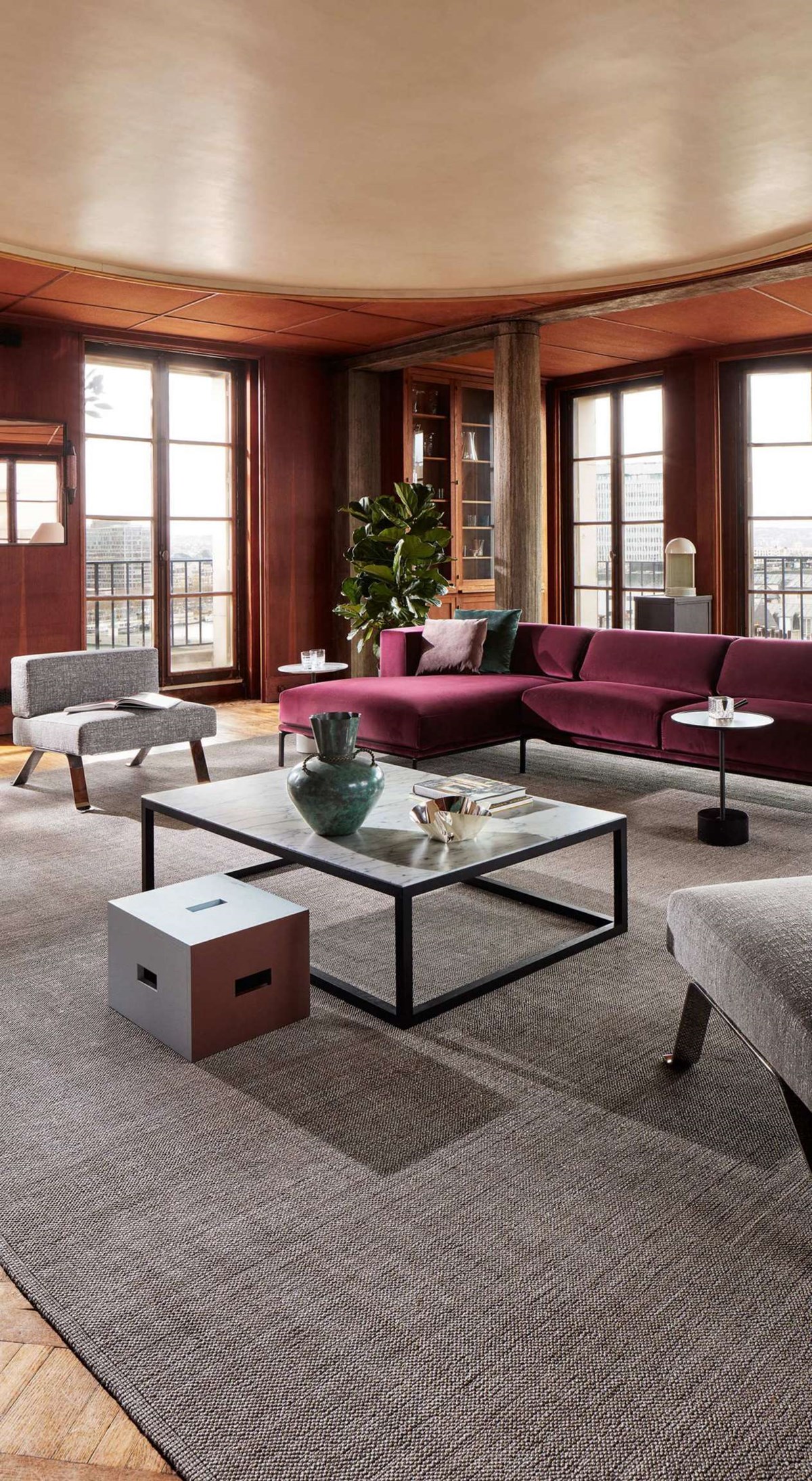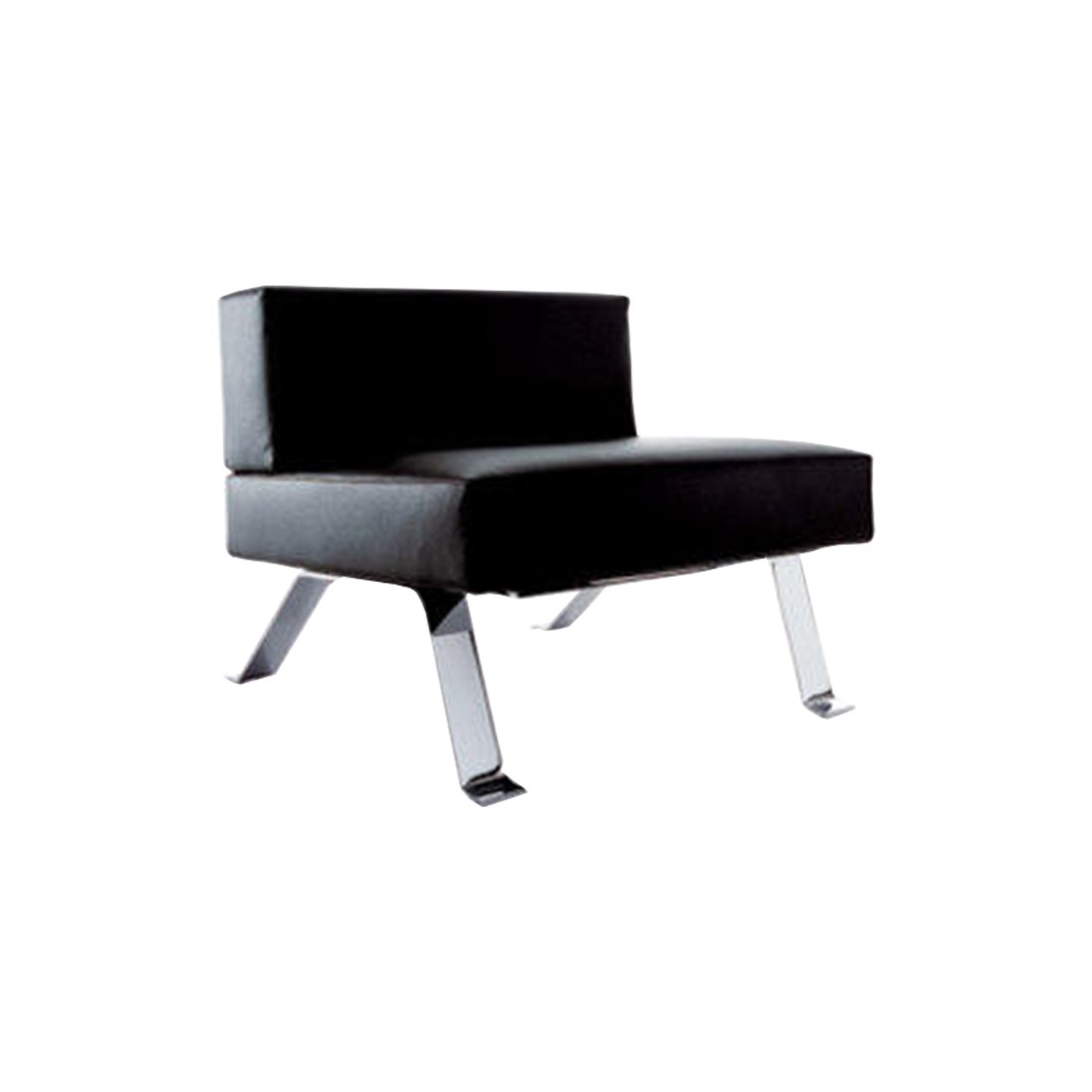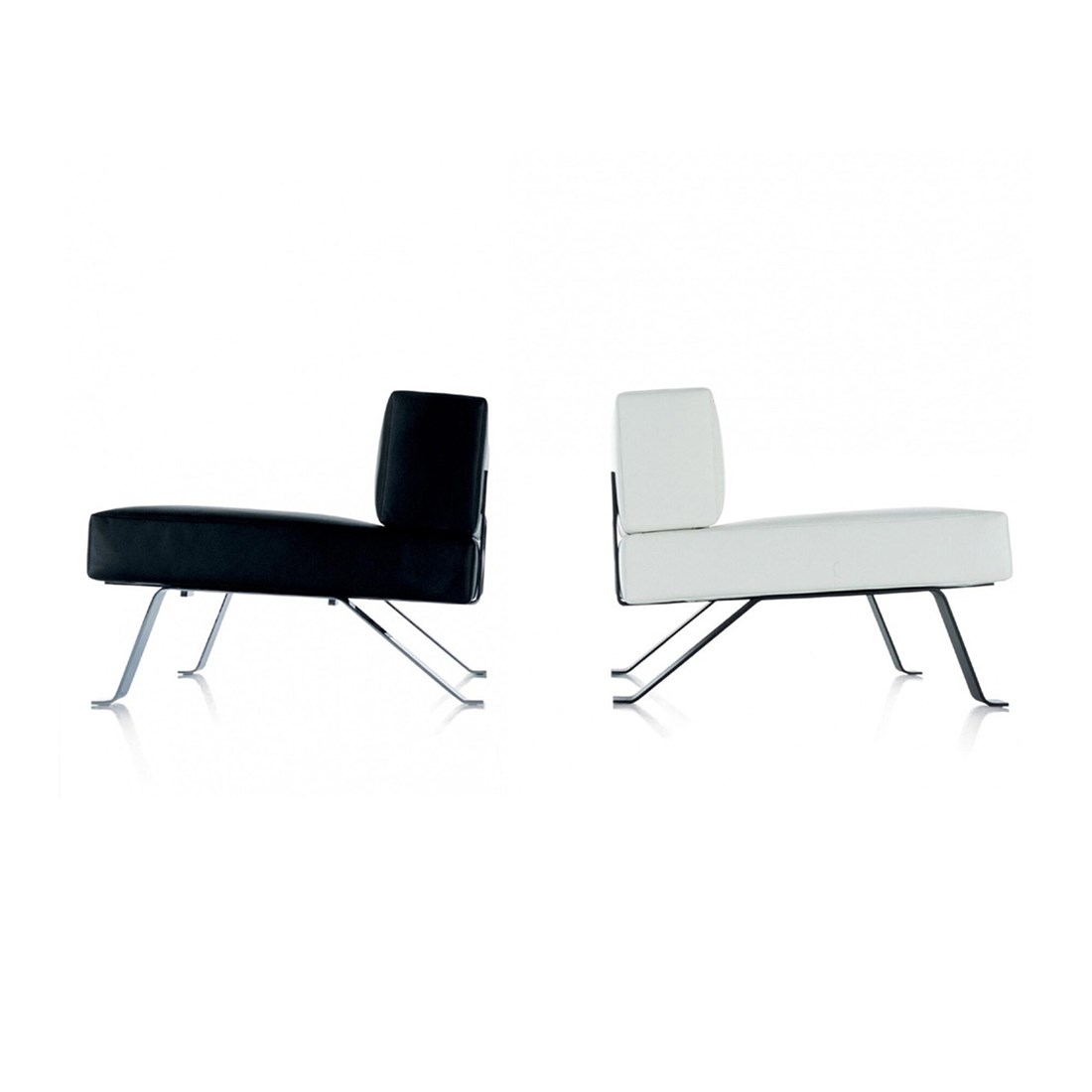2 Fauteuil Grand Confort, Petit Modèle
- Designer:
- Le Corbusier, Pierre Jeanneret, Charlotte Perriand
- Brand:
- Cassina
We don't appear to have any products related to your search term. Please try again.
Shipping and discount codes are added at checkout.




The Ombra is available in a range of Cassina fabric and finish options, please enquire to view the full library of available options.
Charlotte Perriand designed Ombra in 1953, taking as her reference her Ombra Tokyo, which was created round about the same time and featured curved plywood. The interplay between the object and its shadow (“ombra” in Italian) expresses Perriand’s aesthetic, where function is maximised while structure is minimised to conjure a design that is both highly inventive and exquisitely elegant.
The strict geometric lines of the seat and back-rest slot perfectly one into the other, making them look as if they are one, continuous, piece. Perriand’s minimalist approach and artistic vigour are manifest in her drive for total comfort, in a piece that has been re-issued by Cassina in full respect of the original concept.
Charlotte Perriand designed Ombra in 1953, taking as her reference her Ombra Tokyo, which was created round about the same time and featured curved plywood. The interplay between the object and its shadow (“ombra” in Italian) expresses Perriand’s aesthetic, where function is maximised while structure is minimised to conjure a design that is both highly inventive and exquisitely elegant.
The strict geometric lines of the seat and back-rest slot perfectly one into the other, making them look as if they are one, continuous, piece. Perriand’s minimalist approach and artistic vigour are manifest in her drive for total comfort, in a piece that has been re-issued by Cassina in full respect of the original concept.

